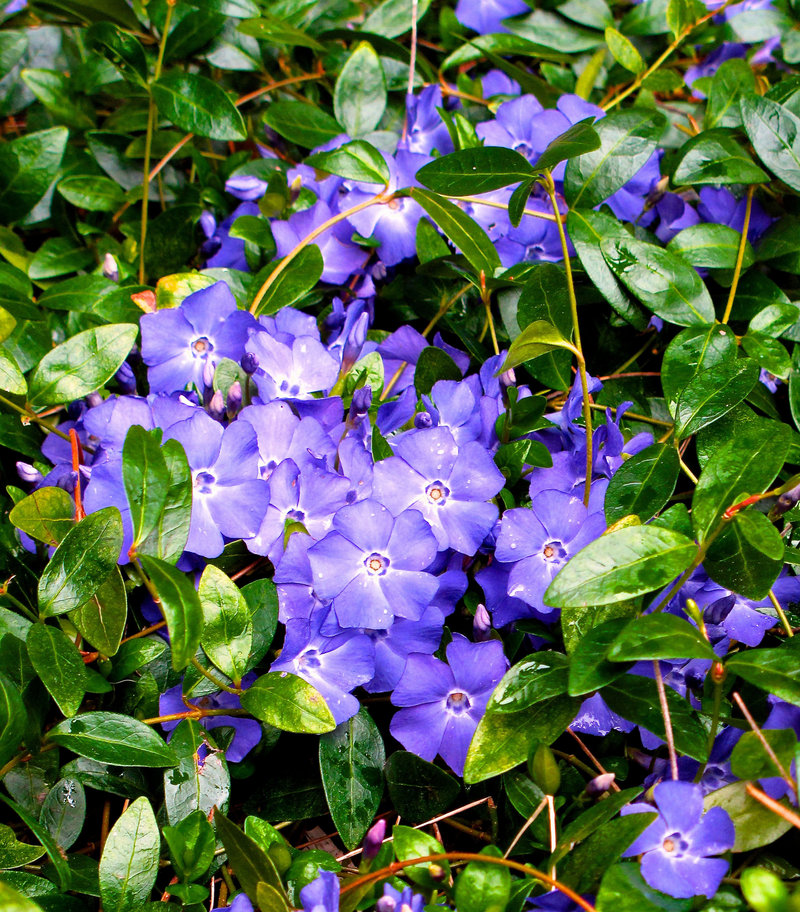Turf grass is the ground cover of choice for many property owners, mainly for its rich, carpet-like appearance.
But grass is thirsty, demands frequent maintenance and provides little wildlife appeal.
That’s where other ground covers come into play.
How do you choose which cover-up is right for your yard?
First, determine the role it must play.
Most ground cover perennials — evergreen or deciduous, woody or herbaceous — provide dense soil cover, discourage weed growth, prevent soil erosion and provide visual interest.
“How does the area that you want to cover impact visually with the rest of your surroundings?” asks Rebecca Finneran, a horticulture educator with Michigan State University Extension.
For instance, you might not want to fill in a bed next to your home with a grass that gets 6 feet tall. But grass-like ground covers such as Liriope (creeping lilyturf) are well-suited to much of the country and need mowing just once a year, she says.
Make sure you select ground cover plants that will adapt readily to the site conditions.
“Sun or shade? Root competition from surrounding trees or shrubs? Drainage and types of soil on the property? Microclimates such as reflective surfaces, high wind, a septic field that stays warm all winter? Make the right plant choice,” Finneran says in an email.
Many ground covers thrive in areas where turf grass won’t grow, like dense shade, or in soggy or acidic soils. In the latter case, try moss. Its color and texture adds interest, and moss is nearly maintenance-free.
Other ground cover considerations:
• Deer resistance. This is where short shrubs work well, like junipers, which also are shade-tolerant and give off pleasant odors.
Other deer-deterrent ground cover plants include catnip, creeping thyme and spurge.
• Invasiveness. How readily do the plants reproduce, and are you planning to maintain them or let them run?
“In the case of the latter, gardeners should choose plants that only grow in a clump — not run underground,” Finneran says.
• Good weed control is a must. Adding a thick layer of mulch helps retain moisture and keeps weeds down until the new plants are able to root.
• Managed meadows rich in prairie flowers are an attractive alternative to turf grass.
“These no-mow areas filter water, encourage the return of native plants that provide food and cover for wildlife, and have curb appeal,” says Susan Barton, an extension horticulturist with the University of Delaware.
• Watering. Ground covers have about one-quarter the nutrient needs of turf but do need water on a regular basis, especially during their first year, while they’re getting established.
While groundcovers may not enjoy the esteem of well-manicured lawns, they are a practical step up in problem areas.
“The use of ground covers is limited only by your imagination,” Finneran says. “By using a combination of plants, gardeners can weave an interesting tapestry that is both functional and natural looking.”
Send questions/comments to the editors.



Success. Please wait for the page to reload. If the page does not reload within 5 seconds, please refresh the page.
Enter your email and password to access comments.
Hi, to comment on stories you must . This profile is in addition to your subscription and website login.
Already have a commenting profile? .
Invalid username/password.
Please check your email to confirm and complete your registration.
Only subscribers are eligible to post comments. Please subscribe or login first for digital access. Here’s why.
Use the form below to reset your password. When you've submitted your account email, we will send an email with a reset code.